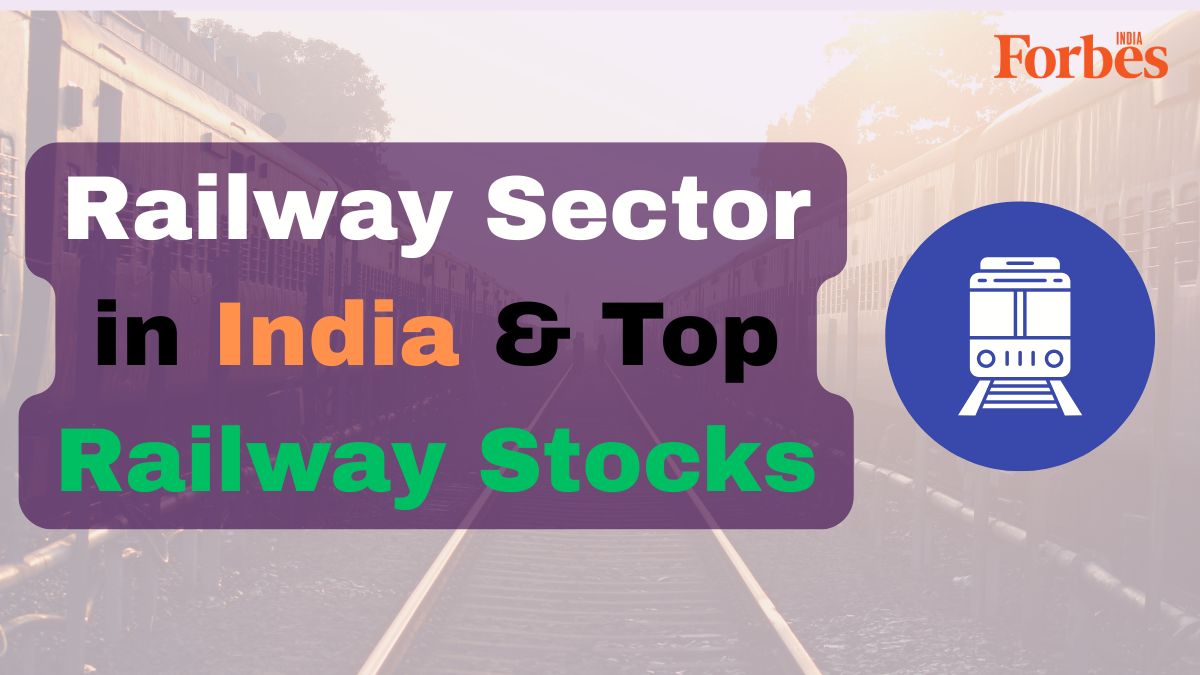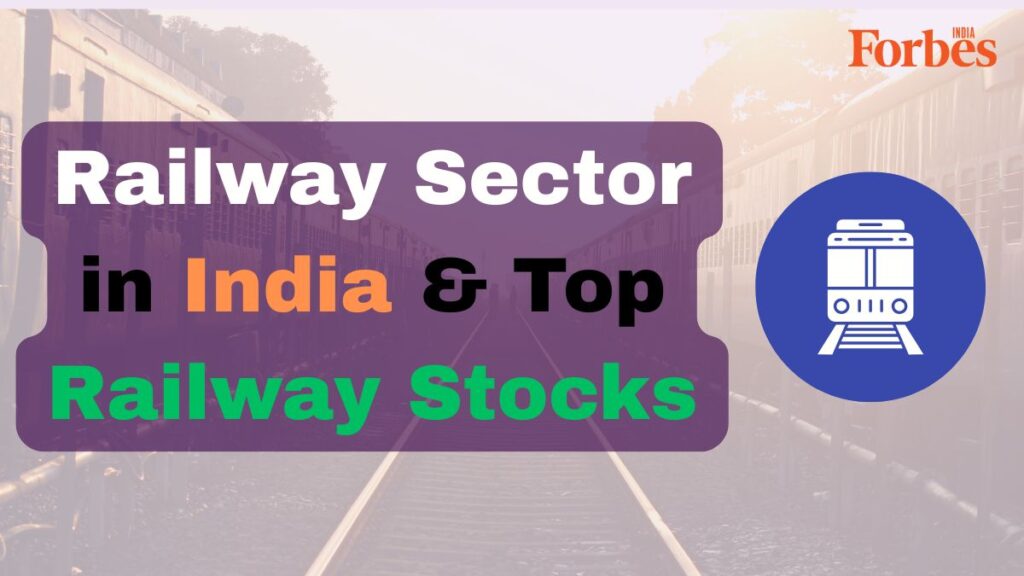The railway sector is constantly evolving, driven by government initiatives for modernisation and expansion. One prime example is the launch of Vande Bharat, a semi-high-speed electric train capable of reaching up to 160 to 180 kmph. The Ministry of Railways currently operates 136 Vande Bharat trains with a vision toward a sustainable railway sector in India. These developments could make railway stocks in India an attractive option for investors.
In this blog, we will examine some of the leading railway stocks and discuss the role of the Indian Government in improving the sector.
If you’re wondering which railway stock is best to buy, here’s the list of Indian railway companies sourced from the National Stock Exchange as of April 1, 2025:
| # |
Company |
Market Cap (in ₹ crores) |
| 1 |
Indian Railway Finance Corporation (IRFC) |
1,63,029.61 |
| 2 |
Rail Vikas Nigam |
73,100.80 |
| 3 |
Indian Railway Catering And Tourism Corporation (IRCTC) |
58,036.00 |
| 4 |
Container Corporation of India |
42,650.60 |
| 5 |
IRCON International |
15,020.04 |
| 6 |
Bharat Earth Movers Limited (BEML) |
13,201.31 |
| 7 |
Rail India Technical and Economic Service (RITES) |
11,053.89 |
| 8 |
Titagarh Rail Systems |
10,826.42 |
| 9 |
Railtel Corporation of India |
9,692.34 |
| 10 |
Texmaco Rail and Engineering Limited |
1,325.24 |
Government schemes and initiatives for the railway sector
With the government rolling out initiatives like the Amrit Bharat Station Scheme and Green Railway, now may be a good time to explore investment opportunities in railway stocks.
Amrit Bharat Station Scheme
The Amrit Bharat Station Scheme is about upgrading 1,275 railway stations across India, making them more modern and passenger-friendly. The goal is simple: turn railway stations into efficient, welcoming spaces for travellers and businesses. The scheme will work towards better accessibility, cleaner platforms, improved waiting areas, lifts, escalators, and even free Wi-Fi.
The plan also supports local businesses with ‘One Station, One Product’ kiosks and adds executive lounges for premium travel experiences. Beyond passenger comfort, the scheme also focuses on smarter urban integration, multimodal transport, and sustainable features.
Union Budget Allocation 2025-25
The Union Budget 2025-26 has assigned ₹2.65 lakh crore for Indian Railways, almost the same as last year. The main focus remains on cargo expansion, aiming to reach a capacity of 1.6 billion tonnes this year to become the world’s second-largest cargo-carrying railway network after China.
Other key budget highlights include 100 percent rail electrification and plan to manufacture 200 Vande Bharat trains, 100 non-AC Amrit Bharat trains, and 50 NAMO Bharat trains for urban routes. However, funding for the Dedicated Freight Corridor Corporation has dropped to ₹500 crore from last year’s ₹5,499 crore.
Indian Railway Finance Corporation
The Indian Railway Finance Corporation (IRFC) funds railway projects for expansion, modernisation, and rolling stock acquisition. Established in 1986, IRFC operates under the Ministry of Railways and is classified as an Infrastructure Finance Company (NBFC-IFC) and Systemically Important Non-Deposit Taking Non-Banking Financial Company (NBFC-ND-SI) with the Reserve Bank of India (RBI).
As of December 31, 2024, IRFC’s market cap was around ₹2 lakh crore with ₹4.6+ lakh crore worth of assets under management (AUM), making it India’s third-largest government NBFC. It has also funded over 80 percent of Indian Railways’ rolling stock.
FDI and Private Sector Participation
The International Trade Administration reported that the Indian Government allows 100% Foreign Direct Investment (FDI) to enhance infrastructure for shipment and high-speed trains. From April 2000 to June 2022, FDI in the railway sector reached over $1 billion and might attract $715+ billion by 2030.
Private investors can also invest in railway stocks like IRCTC, IRFC, and IRCON, which are listed on the NSE. With rising investments and modernisation, Indian Railways offers promising opportunities for global investors and retail traders.
Advancements in Metro Rail Projects
India’s Metro Rail network spans 1,000+ km across 23 cities and is now the third-largest worldwide. It makes daily commutes faster and more affordable. In January 2025, PM Narendra Modi announced Metro network expansion with ₹12,200 crore worth of projects.
With over one crore daily passengers, India even surpassed Japan in Metro projects in 2022. Delhi Metro also provides consultancy for Metro projects in Bangladesh, Saudi Arabia, and Kenya. As India aims for the second-largest Metro network, it’s transforming urban mobility like never before.
Green Railway Initiative
To become a Green Railway network by 2030, the Indian Railway is working on major eco-friendly upgrades like full electrification, energy-efficient trains, renewable energy usage, and green-certified stations. These efforts will reduce carbon footprints and make train travel cleaner, greener, and more sustainable for the future.
In June 2023, a Memorandum of Understanding (MoU) was signed between the Government of India, Indian Railways and the United States Agency for International Development/India (USAID/India) to encourage the adoption of renewable energy and improve energy efficiency.


